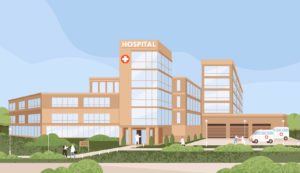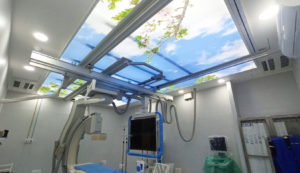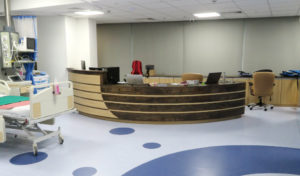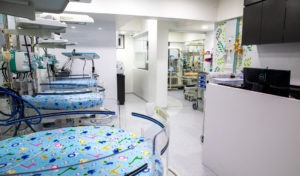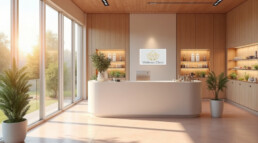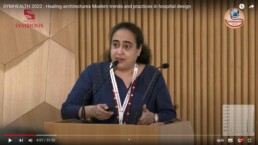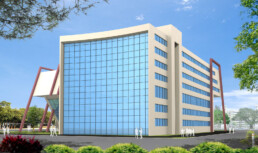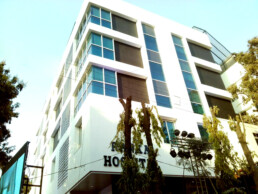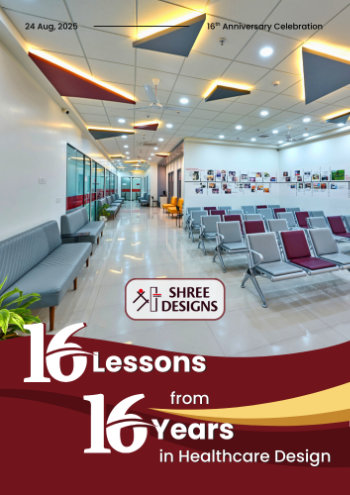16 Years of Shree Designs: Key Lessons in Building Better Healthcare Spaces
By Ar. Kshititi Nagarkar, Founder & Principal Architect, Shree Designs
For over 16 years, Shree Designs has been shaping healthcare facilities that go beyond aesthetics — spaces that heal, protect, and perform. With a portfolio spanning 30+ projects in both private and government sectors, our work has taught us one thing above all: healthcare design must serve people first, always.
In this anniversary edition, I’m sharing 16 practical insights drawn from real projects — lessons that combine creative vision, regulatory compliance, and deep technical know-how.
1. Comfort & Healing – Designing for Well-being
A healthcare facility should do more than treat illnesses; it should actively contribute to patient recovery and comfort.
- Harness Natural Light through façade orientation and glare-control measures.
- Ensure Thermal Comfort with zoned HVAC systems and HEPA filtration.
- Choose Colours that Heal by applying low-VOC, antibacterial paints in psychologically supportive tones.
- Control Noise with acoustic panels, wall cladding, and door seals to maintain WHO-recommended decibel levels.
“A healing environment doesn’t happen by accident – it’s the result of thoughtful design choices that support body and mind.”
How We Built with Light, Calm & Comfort
Our design for Upasani Super Speciality Hospital (USSH), a greenfield project in Mumbai, embodies this principle. We carefully zoned departments to offer privacy and therapeutic views from upper-level patient rooms, while employing room‑in‑room OT designs with HEPA filters and movable partitions to balance functionality with sterility.
This approach taught us that healing isn’t just in medical care, it’s embedded in floor plans, sightlines, and sensitive zoning designed to reduce stress and speed recovery.
2. Clarity & Accessibility – Making Spaces Easy to Navigate
From the moment someone enters a facility, their journey should be clear and effortless.
- Plan Intuitive Wayfinding using colour zoning, pictograms, and lighting cues.
- Build for Universal Access with IS-compliant ramps, slip-resistant floors, and wheelchair-friendly turning radii.
- Design for Patient Ergonomics with adjustable beds, height-appropriate fixtures, and rounded-edge furniture.
3. Safety & Compliance – Protecting People and Meeting Standards
Safety is not negotiable in healthcare design.
- Layer Lighting to meet NABH and IS lux-level standards.
- Integrate Infection Control with seamless flooring, coving, and hands-free hardware.
- Plan Fire Safety with fire-rated doors, pressurised staircases, and sprinklers.
- Select Compliant Materials that are antimicrobial, durable, and fire-safe.
Smarter Circulation: Navigating with Clarity & Care
At Symbiosis Speciality Hospital in Dadar, we reimagined traffic flow during the pandemic, delivering spacious waiting zones, isolated billing areas, and clear circulation to reduce crowding and infection risk. Strategic movement and visibility are not luxuries; they’re lifelines in healthcare design.
4. Efficiency & Flow – Designing for How Care Works
Facilities must function as well as they look.
- Support Staff Ergonomics with nurse stations offering 360° patient visibility and easy access to supplies.
- Streamline Circulation by separating clean and dirty pathways to maintain sterility.
- Integrate Technology with service booms, medical gas panels, and concealed IT conduits for easy upgrades.
Standards that Protect, Aesthetics that Uplift
In the Surgical Speciality Oncology Centre (Mumbai), we transformed rooms with automation, adding individual patient tabs instead of shared TVs, opting for single/twin rooms, and employing hands-free, antimicrobial surfaces. These choices upheld NABH safety while offering dignity and calm to vulnerable patients. Safety can coexist beautifully with patient-centric comfort.
5. Adaptability & Longevity – Building for the Future
Healthcare is evolving — facilities must evolve with it.
- Plan Speciality-Responsive Layout, anticipating heavy equipment and unique clinical needs.
- Choose Future-Ready Materials like modular walls and high-performance flooring that can adapt over decades.
Efficiency That Empowers Staff & Scale
One of our NICU projects – Neobliss Newborn Care – zeroed in on space efficiency and hygiene. In just 750 sq. ft, we included 9 NICU beds, consultation, reception, and waiting areas. High-performance finishes like HGPVC cladding, homogenous vinyl flooring, and antibacterial paints ensured cleanliness and maintainability in a restricted footprint.
Efficiency is in the details.
Closing Note
Every healthcare space we create is built on empathy, expertise, and purpose. These 16 insights are not just our legacy — they’re our way of ensuring that future healthcare facilities across India are safer, smarter, and more human-centred.
📥 Download the full 16 Healthcare Design Insights Guide here
Related Posts
Infographic,Insights and Leadership
16 Insights in Healthcare Design
Designing for healthcare is more than meeting building codes — it’s about creating spaces that…
Infographic,Insights and Leadership
Why Wellness Brands Choose Shree Designs
At Shree Designs, we design Wellness Spaces "That Feel as Good" as "They Function". Blending…
We are 15
As Shree Designs completes 15 years of changing the landscapes of healthcare infrastructure, I,…
Ar. Kshititi Nagarkar at SYMHEALTH 2022
Last year, Ar. Kshititi Nagarkar talked about "Healing Architecture : Modern trends and practices…
Ar. Kshititi at ASICON | Thumb Rule for Design of Healthcare Facilities
A discussion with Healthcare Ar. Kshititi Nagarkar at ASICON 2022 - 'Thumb Rule for Design of…
Kshititi Nagarkar, Architect for The Healthcare Sector
“Decisions on the Infrastructure in the Healthcare Sector are based on costs rather than their…
Insights and Leadership,Media Interview
Gallopers Post – Ranka Hospital, Pune
The Hospital caters to the growing demands for quality healthcare in the southern part of Pune…
Insights and Leadership,Media Article
Facility Planning & Designing of Upasani Super Speciality Hospital
Upasani Super Speciality Hospital (USSH) is a 60-bedded multi-speciality hospital founded by…
Insights and Leadership,Media Interview
Godrej Interio Talk The Walk
Kshititi Nagarkar is among the very few Architects in the country with a specialization in the…
